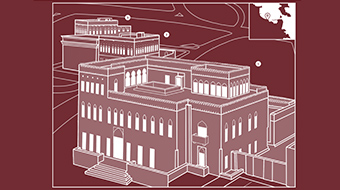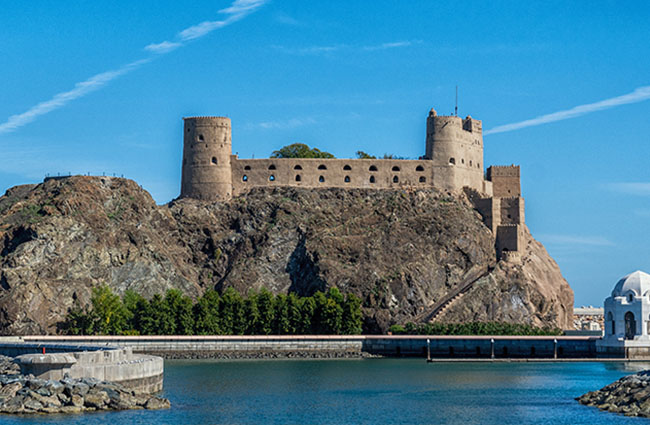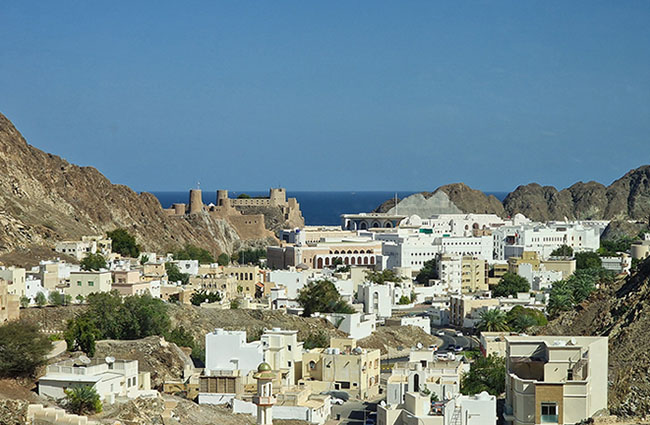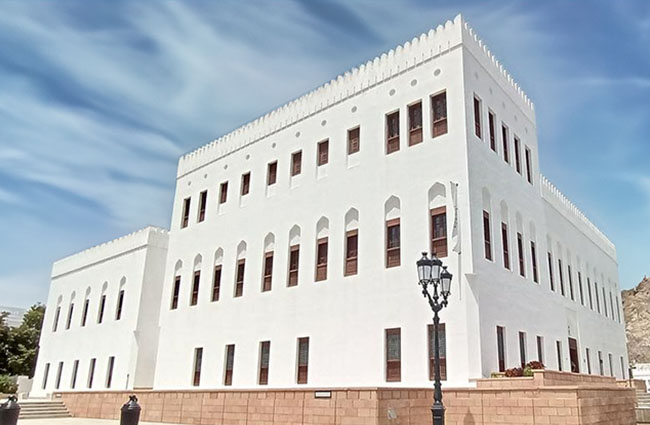Al Jalali Fort

Al Jalali Fort is distinguished by its strategic view of the Sea of Oman along the northeastern side of the old city of Muscat. The fort consists of two towers connected by a wall with openings for cannons in addition to service and storage rooms. The Portuguese completed its construction in the year 1587 AD. At the beginning of the nineteenth century, during the period of Sayyid Saeed bin Sultan's reign, many of the fort's features were developed until it reached its current form.

 Al-Alam Palace, one of the Sultanate's oldest palaces, is
noted for its historical significance attributed to its
Islamic architectural design and rich use of color. The palace
was once used as a residence by Sultan Taimur bin Faisal and
Sultan Said bin Taimur. Today, the palace is ceremonial and
largely used for official state events and to receive guests
of His Majesty the Sultan.
Al-Alam Palace, one of the Sultanate's oldest palaces, is
noted for its historical significance attributed to its
Islamic architectural design and rich use of color. The palace
was once used as a residence by Sultan Taimur bin Faisal and
Sultan Said bin Taimur. Today, the palace is ceremonial and
largely used for official state events and to receive guests
of His Majesty the Sultan.










